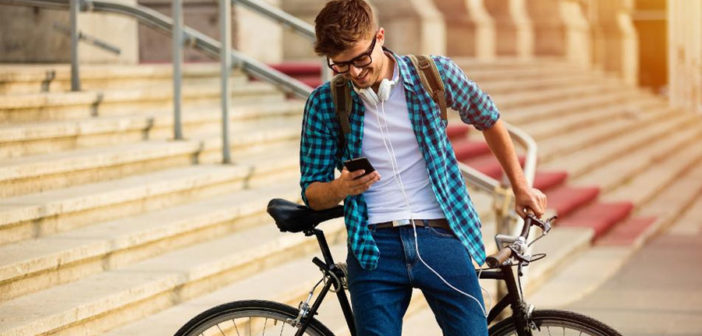Brands are treating social media as a sales platform now more than ever. Nearly 25% of business owners are selling through Facebook and 40% are using social media as a whole to generate sales. Not only does social media influence what people buy through recommendations (23%), a fully 30% of consumers say they would make purchases through Pinterest, Instagram, Twitter, or Snapchat.
It appears as if customers are ready for the social shopping experience. Let’s take a look at the efforts some social media platforms are making to give uses what they want.
Instagram shoppable posts let sellers create a seamless shopping experience
The new Instagram shopping feature, launched in March 2018, allows brands to to tag up to five products in a post. Then, when users click on the tags they can see additional information about the product. This includes an image, product description and price information.
Most importantly, shoppers are given a direct link to the company’s website where they can finalize the purchase. Since making this feature available, one brand has already increased its revenue by 8%.
It shouldn’t be surprising that shoppable posts have been so well received in spite of being so new. Instagram has long been used as a platform to share information on products ranging from fashion to fitness products and has had a major impact on our perception of attractive design. Because of this, there isn’t much friction involved in creating a more direct shopping and marketing experience.
Snapchat pioneers with shoppable AR experience
Snapchat removed any doubt about their commitment to AR with their release of Lens Studio in December of 2017. Continuing in this vein, they have recently introduced shoppable AR experience. The set of newly released features includes Website, Video, and Install to the company’s AR lens.
With the video component, users can click into video content such as how to videos. The install feature either guides AR users to install the brand’s app or open it. Finally, the website feature leads to the company’s website. There the customer may be led to a product or landing page, or to a subscription form.
There’s a significant convenience factor here. Customers who are ready to move down the funnel or who want to learn more have a direct path to doing so. No opening new tabs or windows and looking things up. Instead, the app takes them right where they need to go.
Once customers have entered the company’s website or opened their app, the potential to entice them further into the sales funnel is virtually limitless. They can curate special offers such as coupons, share product demonstration videos, even offer free downloads. The special offers may be especially appreciated by customers who are missing out on 300 billion in possible savings, according to CouponBuffer.
What this means is that consumers can use Lens to “try products on”. Then, they can use the shoppable AR features to connect with those products, learn more and make a purchase. Of course, making these features available doesn’t necessarily guarantee sales.
However, it is clear that Snapchat users are excited about AR – a hefty 70 million of them are checking out the Lens features on a daily basis. It remains to be seen if that enthusiasm will carry over into the brand’s commerce efforts.
Brands with a Pinterest for Business account can sell with ‘Buy Now’ pins
Pinterest business users already have access to features such as analytics. If they are approved to use Buyable Pins, they can use their Pinterest account as a direct sales platform.
Pinterest users can share products across multiple pins. They can also promote a number of their buyable pins at any given time. Take a look at the Pinterest account of MTM Special Ops Watchesfor a great example. Pinterest has made the buying process as easy as they have made pinning. Customers simply click the red ‘Buy It’ button that sits right next to the ‘Pin it’ button on buyable pins. The setup is ideal for encouraging impulse purchase. Again, convenience is a significant factor for customers here as well.
Unfortunately, the perceived convenience doesn’t always lead to adoption. Enthusiasm about Buyable Pins appears to be a bit low. It is always a bad sign about customer attitude when a major brand such as Macy’s reports extremely low sales from them. On the other hand, according to Shopify, the average Pinterest purchase is around $50. That’s higher than anyone else. So, when Buyable Pins work, they really do work.
While other platforms like Instagram offer similar features. Pinterest is at a bit of an advantage here as they first introduced Buyable Pins in a limited fashion back in 2015. Not only does this put them first, it has given them time to build anticipation as they began to open this option to a wide array of sellers.
While there are certainly critics of this, there is no doubt that social media platforms are becoming sales platforms. A big part of this is creating interfaces that allow users to make purchases and learn more about products while maintaining a seamless social media experience.
–
This article first appeared in www.forbes.com
Seeking to build and grow your brand using the force of consumer insight, strategic foresight, creative disruption and technology prowess? Talk to us at +9714 3867728 or mail: info@groupisd.com or visit www.groupisd.com




